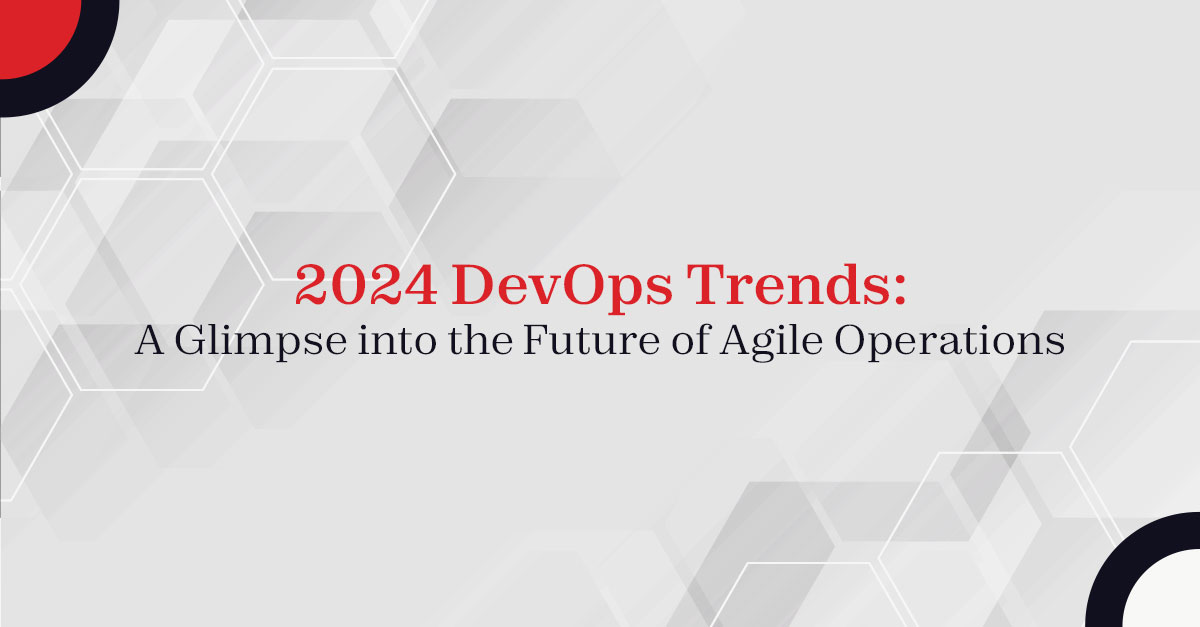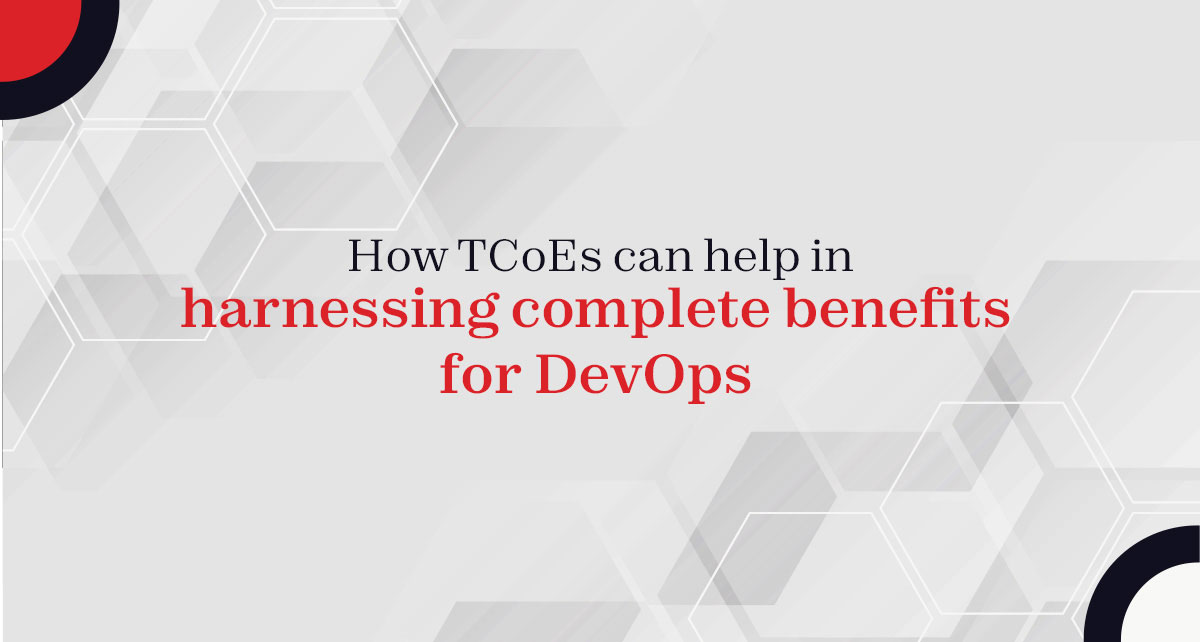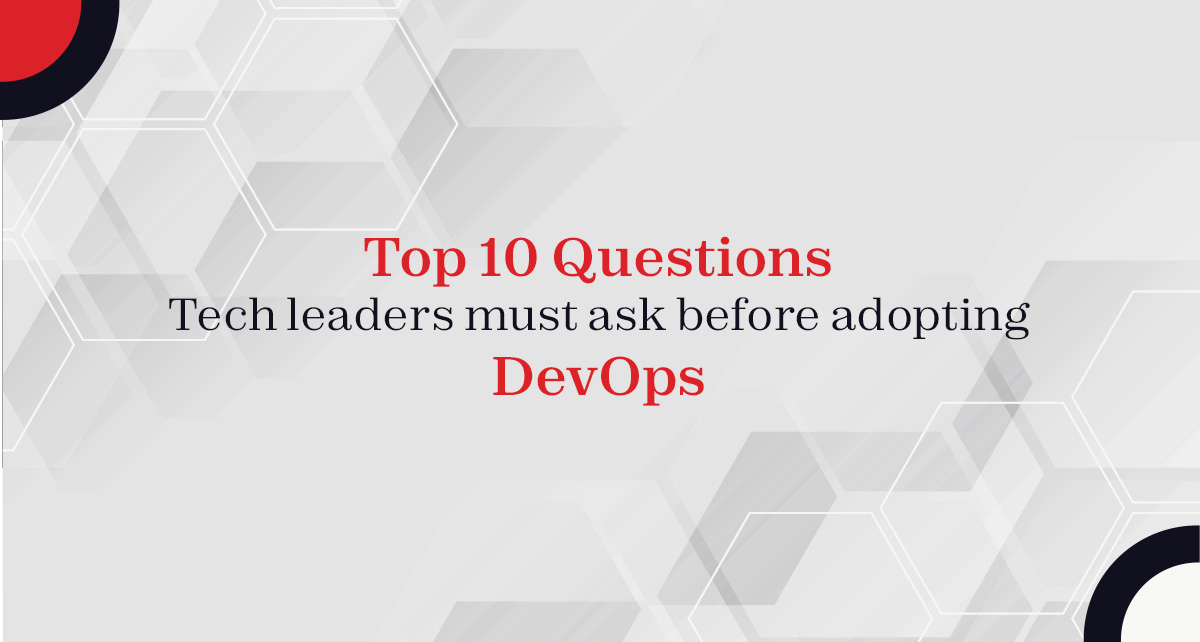The news about high-profile hacks, data breaches, and ransomware attacks is very common these days. While this makes it difficult for companies to feel secure, and they often panic about their company’s security, application, data and network security still takes back seat. With the growth and diversification of your organization, an attacker has a broader front to attack, therefore, you must protect your network, data, and applications even more diligently than ever before.
The world of “Continuous” can be intimidating for engineering, and IT heads regarding security and compliance. Every organization must comply with external regulations like HIPAA, PCI DSS, GDPR and SOX. However, it is essential to note that not malicious hacks and attacks cause all security issues.
Most of today’s customer-facing applications hold sensitive customer data, which increases the risk of exposure to potential security threats, making futuristic technologies and applications incompatible with security and compliance. CI/CD benefits IT teams by reducing infrastructure management challenges, allowing them to innovate more, and ensuring security and compliance.
Business can innovate fast, update products frequently, and release new products regularly by using DevOps, a key component of Continuous Delivery. However, IT teams in many companies face challenges in maintaining a stable IT infrastructure while complying with regulatory requirements. It leaves IT teams to deal with regular Infrastructure instead of innovating.
Few industries require more robust compliance requirements, like healthcare, financial services, and digital payment services providers. Maintaining strict rules and regulatory requirements from credit card data to health information privacy is challenging for many IT teams. A failure to maintain compliance may result in lost business, substantial fines, or worse for your organization.
Our article looks at how you can combine DevOps with Continuous compliance and Security.
Why Continuous Compliance?
The advent of cloud-native computing has brought new complexities regarding the way in which applications are delivered and the handling of user data in applications. The scale of data being processed through the system at any given point in time is much higher than it used to be. Compliance requires organizations to manage this data effectively.
When dealing with such dynamic systems, audits become outdated the very next day. The constant deployment of new releases can expose sensitive information to third-party applications, as one release can expose an endpoint to a third-party application.
There is a constant change in the regulatory requirements themselves. Keeping track of these changes and adapting your systems to remain compliant is vital. Therefore, continuous compliance should be a part of any DevOps workflow.
The highest levels of compliance and security can be achieved by ensuring constant compliance. By doing so, you will not only be able to deliver reliable software, but also be able to run a reliable business. In order to meet the industry and regulatory requirements, organizations should adhere to a culture and strategy of continuous compliance.
Continuous Compliance with DevOps
The process of meeting compliance requirements was previously conducted using spreadsheets, checklists, and cross-functional teams digging for data. Prior to the advent of the cloud, where the data could literally be anywhere and everywhere, being certified compliant was imperative to a business, but not crucial enough to codify the process and streamline it.
In order to demonstrate their security posture to customers, partners, and shareholders, organizations of all sizes depend on internationally recognized security standards. Systems must be designed that simplify compliance with NIST, ISO, SLSA, GDPR, SOX, SOC2, PCI DSS, HIPAA, and HITECH standards. Due to our own experiences in SOC 2 compliance and many other compliance initiatives, we know exactly how challenging this can be. Automating, cooperating, collaborating, and implementing DevOps can help to resolve this issue.
“It’s incredibly difficult to know if you’ve done the right things to stay secure and compliant, especially in an increasingly complex environment of cloud-native applications, infrastructure-as-code, microservices, and more open-source components.” – Dave Steer, GitLab vice president of product and solutions marketing.
Initiating cohesion
Collaboration between developers and security professionals is a rocky process. Secure software development has been a challenge for developers and security professionals. DevOps can embed compliance through technology and culture. Compliance programs must be established before you start, and you must decide whether your organization will separate compliance from security or integrate it. No matter how you look at it, security and compliance are interdependent. Security carries out the actions necessary to comply with regulatory requirements set by compliance.
And that’s when the fun can really begin. In DevOps, automation is at the core, and compliance is one of the processes in need of automation and literally built into DevOps. The compliance process can be streamlined in two main ways while using DevOps:
- CI/CD pipelines should include compliance standards. A pipeline might not work for all compliance requirements, but it eliminates manual checklists and provides a clear audit trail. It also can order a halt if there is a chance of process failure.
- A system of records, or SOR, should be established. DevOps teams can use an SOR to track compliance prior to updating code or processes
Best Practices for Continuous Compliance in DevOps
By implementing compliance-driven DevOps, operational costs can be reduced, efficiencies improved, and risks reduced. In DevOps, continuous compliance includes the following practices:
- The DevOps teams should integrate compliance activities early into the software development process, in the same way they handle testing. If Testing shifts left, then compliance shifts left too, and automation will help to achieve this to some extent. Security and compliance concerns can’t be put off until later in the release cycle. By following this process, the compliance-related blocks will be successfully removed, as well as the security, agility, quality, and stability of the software will be enhanced.
- Maintaining audit trails of software development activities is one of the most crucial requirements of regulatory compliance. Each change to the source code file will be tracked and logged by the auditing system. In addition to helping with compliance, this will also prove helpful in case of a disaster. With continuous deployment, every build gets tagged and every deployment is continuously monitored to prevent unauthorized changes.
- Provisioning infrastructure at scale is easier when infrastructure and configurations are codified. As a result, compliances can be enforced dynamically while infrastructure is tracked and reconfigured automatically. The code automates compliance checks, and thereby non-compliant resources are flagged off and developers can easily make them compliant, leading to faster development.
How DevOps Improves Compliance & Security
DevOps, which integrates security into the development process, has the potential to improve overall delivery times. This is because this primary concern is taken into account at the outset rather than at the end of the testing phase. As a result of this, DevOps and security complement each other in several ways.
DevOps security controls require an in-depth understanding of what needs to be protected. Automating the process, approving the build, deploying to production risks, and many more are part of this process. The practice of shifting left has become increasingly popular among DevOps teams. To be able to act appropriately, you must be able to monitor what your peers are developing. Many testing tools are available for the purpose of uncovering security gaps in code phases. SAST/DAST are examples of such testing tools. But shift-left means you keep awareness on your right side.
The code-build-deploy cycle is a very simple three-step process of SDLC. Each step entails its own challenges. Starting with source code management (SCM), do we have an accurate picture of the number of vulnerabilities in the source code repository? Is it possible to trace each of these issues back to their respective source packages? What are the methods by which we can control/monitor them?
It is imperative to realize that all of these questions arise without considering that the build process must also be monitored for CI/CD/CD security risks linked to weak IAM controls, and improper use of third-party tools. A suitable toolchain must be in place, once the application has been deployed to maintain a certain level of security. It is important to strike a balance between agility and protection. In the context of the DevOps and security framework, continuous monitoring and zero-trust also play a significant role, extending beyond simply analysing what is happening in code.
A real time scenario of vulnerabilities in the source code repository
In the last five years, Toyota Connected, the tech subsidiary of Toyota, exposed nearly 300,000 drivers’ personal data via GitHub, via its T-Connect service. It was on 15 September 2022 that Toyota learned about the incident. Following discovery, they have issued an apology.
Toyota will never know for sure whether attackers have accessed its access keys. Source code control and manage secrets, like access keys, are essential. These types of secure development errors impact their customers.
Affected customers have been notified of the source code locking. There is no direct evidence that the data was accessed or downloaded at any point, but this cannot be ruled out that no one with malicious intention has no access to these data.
Steps to enhance security with DevOps
Improved Time to Vulnerabilities Resolution
DevOps enables the team to address vulnerabilities once they have been identified in production quickly. The longer a vulnerability exists, the more likely that a bad actor will discover it and exploit it. It is possible to remove exploits and remediate quickly, when you adopt an agile development strategy.
Enhanced communication between operations, development, and security
In DevOps, communication and collaboration play a vital role. Engineering, operations and security teams share this culture from the day-to-day work of engineers. In any DevOps pipeline, concerns of each team can be weighed starting from the planning phase till the deployment phase by working together rather than in silos. As a result, security experts and DevOps teams are able to exchange information more effectively.
Continuous Improvement
CI/CD (Continuous Integration and Continuous Delivery) is another fundamental principle of DevOps. By focusing on iterative releases and continuous improvement, this approach emphasizes continuous improvement over declaring a product “finished” after reaching a specific benchmark. Throughout the development process, the team strives to improve the software’s performance, resilience, and security by adding enhanced features and technologies. As a result of this focus, DevOps teams are more likely to adopt cutting-edge approaches that are up-to-date with the latest security threats. In a nutshell – A proactive approach has replaced a reactive one.
Fewer Surprises After Deployment
Test as early as possible is a natural complement to security in the DevOps model. The more robust the code, the easier it is to secure and the more resilient to outside interference. In addition, adding security to your tests will strengthen your application’s defences when it is in production. This approach reduces surprises after deployment, which can cost your team time and money.
Final Words
Achieving compliance and security through DevOps is challenging. The compliance rules are pretty detailed; hence it is advisable to review them cautiously. The infrastructure and processes must be comprehended enough for DevOps and compliance and security teams.
To summarize, automating these steps for continuous compliance and security automation helps integrate security checks into the continuous delivery pipeline. This will bring clarity and transparency to compliance & security implementation and help meet the compliance regulations. Above all, combining compliances, security measures, and DevOps will ensure safety at speed and scale.
Want to know more? Reach Us at info@enhops.com






